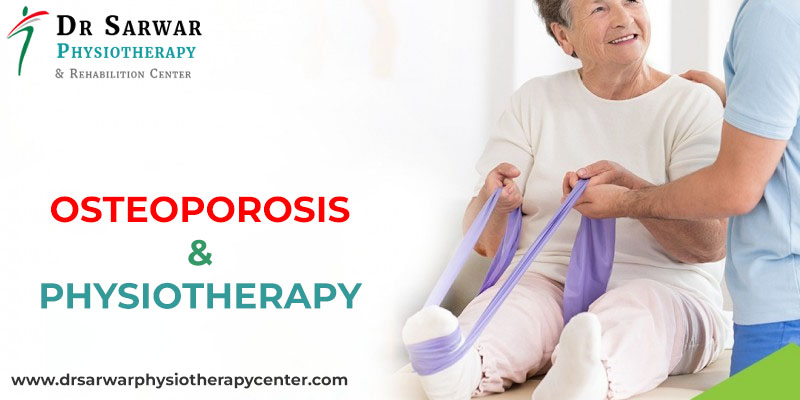Osteoporosis is usually associated with bone aging, but currently, poor lifestyle habits also lead to the appearance of this disease. It usually occurs in women around the time of menopause. In this article we tell you what osteoporosis is, its symptoms and causes, and how physiotherapy treatment in Dwarka helps in osteoporosis.
WHAT IS OSTEOPOROSIS?
Osteoporosis is a disease that weakens the bones, so that there is a decrease in bone mass density.
The word osteoporosis means “porous or leaky bone”.
Who is affected by osteoporosis?
Osteoporosis mainly affects women. There is a certain relationship between the lack of estrogen after menopause and the development of this disease. Thus, when hormone levels are low and there are few periods of menstruation, a loss of bone mass density is caused.
Therefore, women over 50 years of age are the risk group for osteoporosis.
Types of osteoporosis
There are several types of the disease that weakens the bones.
Primary osteoporosis is the most common type of osteoporosis. As already mentioned, it is due to the rapid loss of bone mass after menopause. This makes it a common disease in women, generally between the ages of 45 and 55 years old.
On the other hand, secondary osteoporosis presents the same symptomatology as the previous one. It has the particularity that it can appear at any age and can be caused by the intake of medications that cause bone decomposition.
Osteogenesis imperfecta is a particular form of osteoporosis that occurs at birth, so that bones break easily and, in many cases, for no reason.
Finally, idiopathic juvenile osteoporosis (IJO) appears between 8 and 14 years of age and is characterized by pain in the back and extremities, as well as the presence of fractures.
Symptoms of osteoporosis
Osteoporosis is also known as a silent epidemic, since in the early stages there are no symptoms.
As the bones weaken, the symptoms evolve, being characterized by:
- Bone fragility.
- Vertebral fractures.
- Back pain and back deformities.
- Back and stooped posture.
- Loss of height due to crushing of the vertebrae.
Causes of osteoporosis
Sometimes, the appearance of this disease happens without a known cause. In general terms, age, and therefore aging and bone loss, cause the manifestation of osteoporosis.
As already mentioned, menopause accelerates bone loss, which multiplies the risk of suffering from osteoporosis.
The intake of alcohol and tobacco and a sedentary lifestyle are other of the most frequent causes of osteoporosis.
BENEFITS OF PHYSIOTHERAPY FOR THE TREATMENT OF OSTEOPOROSIS
The treatment of osteoporosis through physiotherapy in Dwarka plays an important role, in a way that favors the density of bone tissue.
It is essential to put yourself in the hands of Best Physiotherapist in Dwarka to see the results. One technique is magnetic therapy for the treatment of osteoporosis. The magnetic fields will help generate low and high intensity currents in the bone tissue, thus increasing the density of bone mass and helping bone recalcification.
As a key point to prevent osteoporosis, it is recommended to have adequate lifestyle habits, such as postural education, moderate physical exercise and a diet rich in calcium, suggests the top physiotherapist in Dwarka.
Exercises to strengthen bones
Exercising can help prevent osteoporosis. Muscle strengthening for osteoporosis is a clear example of this. Using weights and resistance bands, muscle groups can be strengthened, just like the muscles of the spine.
On the other hand, aerobic activities such as dancing or aerobic training machines benefit the bones, in addition to improving cardiovascular health.
Training flexibility with osteoporosis helps maintain good muscle function. Therefore, it is important to move the joints in their full range of motion.
In addition, performing exercises for balance and stability is a key point. This helps prevent falls while improving stability and balance.
Now that you know what the main causes of osteoporosis are and what its best treatment is, you will have been able to verify that the practice of sports exercise in patients with osteoporosis is a way of staying active in a safe way that also helps prevent the onset of osteoporosis. of osteoporosis. At Physiotherapy centre in Dwarka we have a team of specialists in physiotherapy and rehabilitation who can help you in the treatment of osteoporosis. Make an appointment at our Physiotherapy clinic in Dwarka and put yourself in the hands of our best physiotherapist in Delhi.



